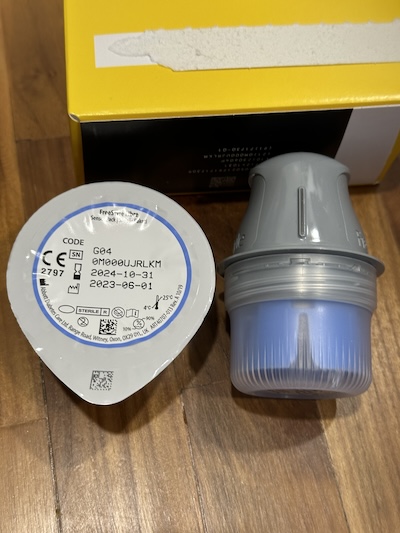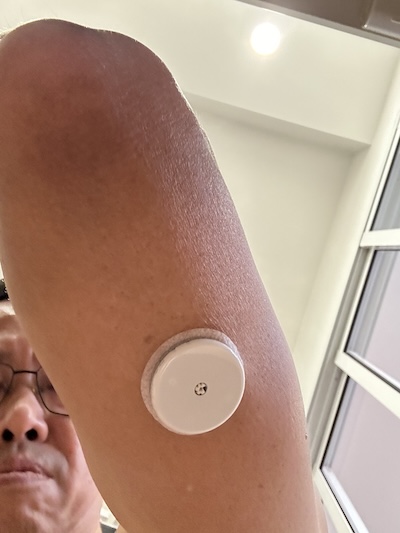My Experiment with FreeStyle Libre
I wore the FreeStyle Libre CGM (Continuous Glucose Monitor) sensor a short while ago as an experiment. CGMs are able to capture the blood sugar fluctuations in addition to the snapshot of the standard fasting test, and I wanted to understand
- How my blood sugar level fluctuates through the day and how various food and exercises affect it
- The experience of going through the day with this sensor attached

The sensor comes with an applicator that works like a self-inking rubber stamp. After cleaning and alcohol-wiping the back of my upper arm, I was able to “stamp” it into place. It looked scary but it was quite painless.



Some findings:
The sugar elevation typically comes about 30 to 60 minutes after eating. My highest blood sugar spikes came from rice, especially with gravy. The highest recorded was a plate of Japanese curry rice with potatoes, carrots, and chicken. The spike at lunch time is also from a meal with rice, stewed meat and soup.

Although I don’t take breakfast, my blood sugar in the morning is remains in the stable range, at between 5.0-6.0. Overall it drops from midnight till morning, and then maintains even for quite strenuous workouts. These charts show days of medium to high intensity calisthenics from 10:30-11:30 and then medium intensity Pilates from 12-1pm, with water only, and eating only after 1:30pm.


Quite expectedly, low carb food has minimal effect on my blood sugar level. This previous chart shows a day when I took 肉骨茶 without rice for lunch after my gym sessions, and then a can sardines with olive oil for dinner.
Desserts, even the very sweet ones, raised blood sugar levels but not as much as rice. This included 豆花 with (less) syrup and red beans, some Cadbury Rum & Raisin chocolate. A whole piece of cake elevated my blood sugar level quite high, and packs of nuts (broad beans and cashew nuts) surprisingly also affected the sugar level significantly. It seems that the amount of carbs is a greater factor than the sweetness.
Alcohol (beer and wine) does not seem to raise my blood sugar level, and seems to lower it even. Walking and just general working for 20 minutes or more seem to help lower blood sugar quite significantly.


The sensor was meant to stay on for 14 days. It was not intrusive for the first 8 days, and was secured even through my exercise, showers and sleep. On the 9th day, the adhesive started to itch a little, and then I started to feel the needle prick on the tenth night and decided to reap it off before sleep. I self-applied the sensor so not sure if this was due to some error in the cleaning or application.
Due to the early termination, I was not able to test more food, including durian, porridge, more noodles, 叉烧烧肉, steak, etc. I might experiment with another CGM from Dexcom in the future to try these food.
Overall it was an interesting experience, the sensor was quite comfortable for the first 8 days before it got a bit annoying. Perhaps learning from a professional to apply the sensor would help. If you have diabetes or have tested with high sugar level, this might be a good way to monitor and learn about your blood sugar level and get feedback on how what you do and eat affect it.